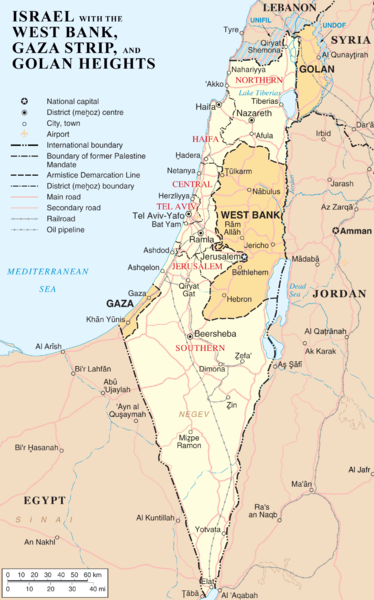 The second full day of the conference started with a short briefing given by one of our Sabeel leaders, Omar. He provided a brief history of the conflict, basically giving us definitions of terms we would hear from others over the next few days: the Nakba, Green Line, Six Day War, Intifada (both First and Second), and Oslo Agreement. (Look at all of those helpful Wikipedia links! It's just like you went to the briefing too!)
The second full day of the conference started with a short briefing given by one of our Sabeel leaders, Omar. He provided a brief history of the conflict, basically giving us definitions of terms we would hear from others over the next few days: the Nakba, Green Line, Six Day War, Intifada (both First and Second), and Oslo Agreement. (Look at all of those helpful Wikipedia links! It's just like you went to the briefing too!)
It was particularly interesting to hear about issues facing Gaza, since access to that region is so restricted. Very briefly, it is very difficult for people to leave Gaza, even during times of conflict. Exports into and imports from the area are also restricted. For example, importing construction materials into Gaza is not permitted. Israel argues that Hamas (the political party in charge in Gaza right now) could use those materials to build military structures. At the same time, though, this makes it almost impossible for the UN to re-build structures (including homes) that have been destroyed during conflict. Finally, there are restrictions on the use of land within Gaza and on the use of fishing areas in the Mediterranean sea.
These circumstances are contributing to a collapsed economy and loss of jobs, a need for housing and shelter (there are high rates of overcrowding and domestic violence), difficulties in accessing health and education services, and high levels of physical insecurity.
The three (very reasonable, to me, at least) requests coming from the international humanitarian community regarding Gaza are: that the land, air and sea blockades are lifted; that safe access to restricted areas on land and sea is granted; and, that civilians are protected from hostilities.
West Bank: Restricted movement because of Israeli development
 The issues in the West Bank are similar, with some slightly different complications. As with Gaza, there are restrictions on the movement of Palestinians. Israeli control of some areas makes it difficult for Palestinian cities to expand. (There is a complicated system of control in the West Bank between Israeli and Palestinian authorites. Check out Wikipedia article on the Oslo Agreement for more information.) There are also road barriers and check points.
The issues in the West Bank are similar, with some slightly different complications. As with Gaza, there are restrictions on the movement of Palestinians. Israeli control of some areas makes it difficult for Palestinian cities to expand. (There is a complicated system of control in the West Bank between Israeli and Palestinian authorites. Check out Wikipedia article on the Oslo Agreement for more information.) There are also road barriers and check points.
Two of the most obvious sources of tension (and humanitarian concerns) in the West Bank are settlements and the wall. The UN says that settlements, under international law, are illegal. They fragment the West Bank and make movement difficult. There are often road networks to connect the settlements that Palestinians are not allowed to use. In addition, there is violence between settlers and Palestinians, and settlers do not usually face punishment for this. The wall is an obvious restriction on movement. Most of it is in the West Bank, so again - it fragments the area and separates communities from each other and, often, their agricultural land. I will talk about checkpoints more in another post, but for now, some people are separated from their work, places of worship, families. Permits are required for West Bank residents to pass through a checkpoint at the wall.
The humanitarian community is making similar requests to alleviate the stresses of forced displacement, difficult access to services (including water) and food and physical insecurity in the West Bank: protect civilians and end impunity for violence; end the forced displacements; and allow safe movement to access services and assistance.
Anyway, this is really just a brief look at the humanitarian situation in the region. OCHA's website has tons of resources about these issues, including maps that highlight many of the problems - where the settlements, road blocks and other movement restrictions are located. You should check them out.
So what?
My impression at the end of the briefing was how clear and obvious some of these humanitarian issues are... and yet how hesitant the international community is to highlight these problems. Many of the UN's requests look directly at human rights - access to health care, clean water, education. Do we choose not to see these human rights abuses? Why do we just stand by instead of making a statement about the importance of human rights for everyone?
One other thought, particularly when thinking about solutions to the conflict... How possible is a two-state solution when settlements (many of which have been there for decades) and road networks permeate the West Bank?
Starting that afternoon, we would begin to see how these realities affect the lives of Palestinians trying to go about their daily routines.

No comments:
Post a Comment